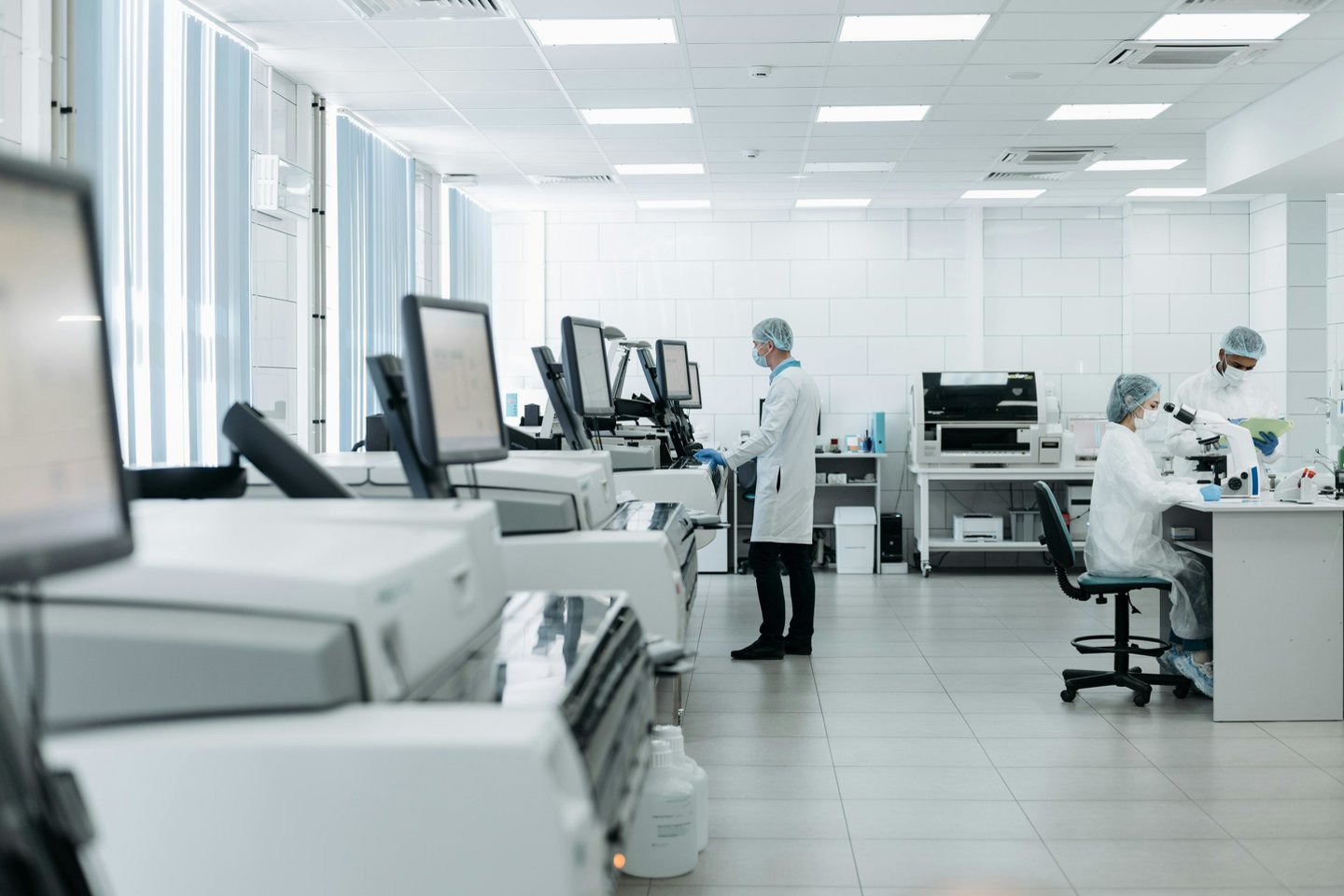This article explores the theoretical mechanisms of action, individual and combined peptide functionalities, and the possible research implications of a Sermorelin-Ipamorelin blend in fields such as cellular aging, cellular regeneration, and metabolism. These investigations offer novel insights into how such peptide combinations may influence growth hormone regulation and associated pathways in biological systems.
Sermorelin and Ipamorelin Peptide Blend: Introduction
In recent years, peptides have emerged as promising candidates for scientific research due to their unique potential to influence a wide array of physiological processes. Among these peptides, Sermorelin and Ipamorelin appear to stand out for their potential impacts on growth hormone (GH) secretion and the broader implications for physiology.
Studies suggest that while Sermorelin may mimic the actions of GHRH, stimulating the release of GH from the anterior pituitary, Ipamorelin seems to serve as a selective GH secretagogue by binding to specific receptors in the hypothalamus and pituitary. Combining these two peptides presents intriguing opportunities for research into growth hormone regulation and its possible impacts on cellular functions, metabolism, and cellular aging. This article aims to provide a detailed overview of the hypothesized properties of the Sermorelin-Ipamorelin blend and explore potential avenues of research.
Sermorelin: A GHRH Analog
Research indicates that Sermorelin, a synthetic peptide comprised of the first 29 amino acids of endogenous GHRH, may act as a GHRH mimetic. It is believed to bind to specific receptors on the anterior pituitary, potentially inducing the release of endogenous GH. The endogenous secretion of GH is thought to play a paramount function in many physiological processes, such as growth, metabolism, and cellular repair.
Research indicates that Sermorelin's action might be pulsatile, aligning with the rhythmic secretion of GH in biological systems. The peptide's potential for modulating GH levels makes it an attractive candidate for research into the mechanisms underlying growth regulation.
Ipamorelin: A Selective Growth Hormone Secretagogue
Ipamorelin is a pentapeptide that belongs to the class of selective GH secretagogues. Unlike other secretagogues, which may activate a wide range of receptors and exert broader impacts, Ipamorelin has been suggested to exhibit a high degree of selectivity for the GH-releasing peptide (GHRP) receptor in the pituitary and hypothalamus. Investigations purport that the peptide might promote GH release by mimicking the actions of ghrelin, a hormone that researchers believe helps modulate GH secretion via the growth hormone secretagogue receptor (GHS-R).
Due to its selectivity, Ipamorelin does not appear to significantly raise levels of cortisol or prolactin, which are often associated with other GHS peptides. This suggests a more targeted impact on GH release, making Ipamorelin an attractive candidate for research that focuses on GH-driven processes without interference from other hormonal systems. Investigations purport that Ipamorelin may play a role in modulating cellular metabolism, possibly influencing protein synthesis, carbohydrate metabolism, and adipose tissue dynamics.
Potential Synergy: The Hypothesized Mechanism of Sermorelin-Ipamorelin Blend
The combination of Sermorelin and Ipamorelin presents an intriguing hypothesis for the potential support of GH regulation through dual pathways. While Sermorelin seems to act by directly stimulating the pituitary to release GH, Ipamorelin appears to simultaneously influence both the hypothalamic and pituitary GH release pathways. Together, these peptides are believed to exhibit a complementary impact on growth hormone secretion that is greater than the sum of their actions.
It has been theorized that this blend may allow for more sustained GH release by leveraging Sermorelin's affinity for GHRH receptors and Ipamorelin's action on GHS-R. Theoretically, the combination of these peptides may result in a more balanced modulation of GH pulsatility and amplitude, mimicking endogenous GH rhythm. This dual-action mechanism might also suggest potential impacts on various GH-mediated processes, including supported protein synthesis, cellular repair, and modulation of lipid metabolism.
Research Implications of Sermorelin and Ipamorelin Blend
- Cellular Processes and Tissue
Research suggests that growth hormones play an important role in cellular regeneration and tissue repair by influencing the proliferation of satellite cells, the stem cells responsible for repair of muscular tissues. GH is also thought to stimulate collagen synthesis, a key element of connective tissues such as tendons and the epidermal layer. As such, findings imply that the Sermorelin-Ipamorelin blend, with its potential to stimulate GH release, may offer new opportunities for research into tissue regeneration and recovery processes in experimental models of injury or degeneration.
- Metabolic Research and Lipid Mobilization
The growth hormone axis is widely regarded by researchers for its role in regulating metabolic processes, including carbohydrate and lipid metabolism. GH may influence lipolysis, the breakdown of fat stores into free fatty acids, while simultaneously modulating insulin sensitivity and glucose uptake. Scientists speculate that the Sermorelin-Ipamorelin blend may serve as a valuable tool in metabolic research, particularly for studies seeking to explore how GH signaling might impact lipid storage, fat mobilization, and metabolic efficiency.
- Cellular Aging and Senescence
Cellular aging is linked to a decline in growth hormone secretion, which may impact various physiological processes, including protein synthesis, mass maintenance of muscular tissue, and integrity of skin structure. It has been hypothesized that the Sermorelin-Ipamorelin blend, by stimulating endogenous GH release, might offer a novel research approach to understanding the mechanisms underlying cellular age-related decline in these areas.
- Neuroprotective Mechanisms
Emerging research suggests that growth hormone (GH) may play a part in neuroprotection and cognitive function. GH is theorized to impact brain function by promoting neuronal growth, synaptic plasticity, and neurogenesis. Additionally, the neuroprotective properties of GH may extend to mitigating oxidative stress and reducing neuroinflammation.
Sermorelin and Ipamorelin Peptide Blend: Conclusion
The combination of Sermorelin and Ipamorelin presents a compelling opportunity for scientific exploration into growth hormone regulation and its broad biological impacts. Studies postulate that this peptide blend may hold promise for various research implications, ranging from cellular regeneration and metabolic regulation to cellular aging and neuroprotection.
Although much remains to be understood about the precise mechanisms by which this peptide blend influences GH pathways, early investigations suggest a synergistic action that may open new avenues for studying the role of GH in complex physiological processes. Further research is required to fully elucidate the potential impacts and implications of this peptide blend, offering exciting prospects for future scientific inquiry. Sermorelin & Ipamorelin blend is available at online for researchers interested in investigating its potential further.




